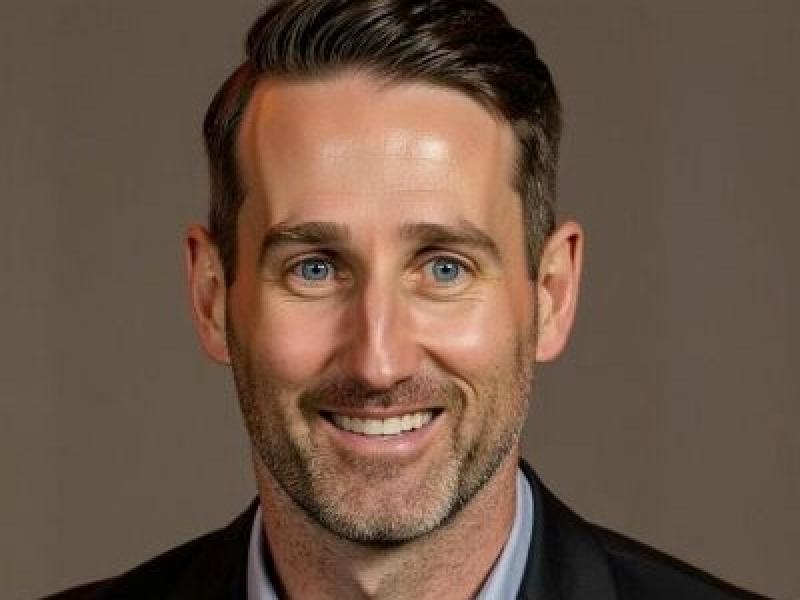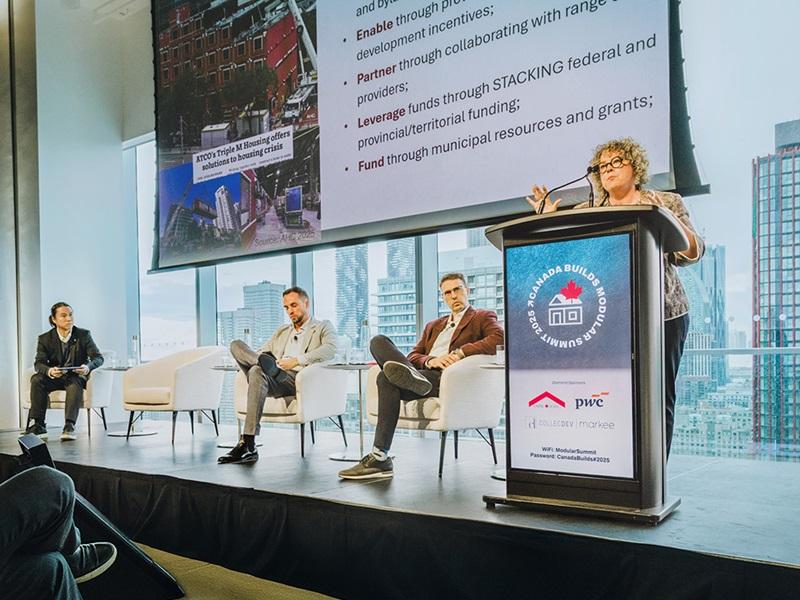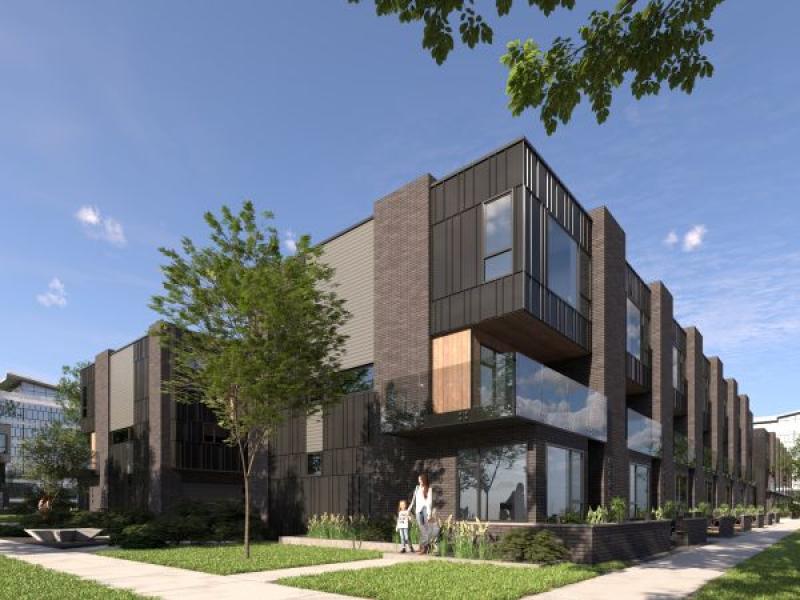
Building an edifice and building a home are mutually exclusive.
Such is Empire Communities’ new, if experimental, ethos that’s redefining homebuilding beyond superficial structures to include everything therein.
‘Building Biology’ was the springboard: a 1960s-era concept developed in Germany by a rat-pack mostly comprised of physicians, academics and architects who explored the causes of, and remedies for, illnesses, then concluded many building materials were the cause.
That philosophy eventually evolved into the Santa Fe, New Mexico-based Building Biology Institute, where comprehensive building standards were developed.
Andrew Guido, vice-president of sustainability and innovation at Empire Communities — who also took a three-year course at the institute, and has become a certified Building Biologist — drew inspiration from said “challenging” principles, but decided to build upon them.
His first tour of duty with the Vaughan, Ont.-based builder was between 2011 and 2015, but upon leaving the company he developed ERTH360 (Every Revolution Transforms Humanity) following a half-decade of research into the relationship between human health and built environments.
ERTH360 new standard for home air quality
Sustainability, efficiency and wellness are ERTH360’s substrate and have paved a path toward integrating green building technologies, while also using natural building materials that, in totality, jettison harmful toxins, augment natural and artificial light, and even enhance acoustics.
This includes using everything from high-efficiency particulate air filtration systems, high-performance energy recovery ventilators, SMART Thermostats and more.
The goal is to mitigate illnesses, as well as their transmission, inside households by ameliorating air quality, all of which earned ERTH360 membership to the American Society of Heating, Refrigerating and Air-Conditioning Engineers (ASHRAE).
Empire recently announced its standard home model, piloted in its Caledonia, Ont.-based Avalon development, became the first ASHRAE-approved development in North America, but it isn’t stopping there.
Empire Communities — which fully backs Guido’s ERTH360 — is introducing this augmented air filtration into the latest phase of Riverland, a master-planned development in Breslau, on the immediate outskirts of Kitchener-Waterloo. The multi-phased project launched in 2009 and when completed will see a mix of 900 to 1,000 townhomes and detached houses.
“The (140-150 homes in the third phase of this) community will have superior indoor air quality,” Guido said.
That’s only the beginning.
“Phase 1 of ERTH360 deals with air and all the contaminants inside the air,” Guido continued. “Other phases will deal with water purification and circadian lighting, which is very influential in terms of our mood and what we do, and our energy levels, as well as our ability to sleep well.
“We’re using the same mechanical, filtration and ducting systems,” Guido said. “There’s no reason (Riverland) homes won’t achieve that requirement.”
The Riverland community in Breslau
The master-planned community has been a long haul, partly because it’s atypically divided into “areas.” The fully occupied, four-phase first area is comprised of 478 units, while Area 2, currently in its third phase, will add an additional 450 units. To date, about 775 homes have been completed, but when all is said and done, Empire Riverland will be composed of 900 to 1,000 homes.
The development is growing in tandem with its surroundings, with the rollout of each phase sensitive to demand and market pressures alike.
The homes are a mix of townhouses and detached homes — 20-foot lots for the former, designed as back-to-back domiciles, while the detached segments offer 27- to 42-foot lots — to cast and capture a wide net of potential buyers.
“In downtown Toronto, most people skew towards a smaller condo size, but sometimes those people outgrow their lifestyle and they want more space,” Guido said. “We have a natural inventory of different kinds of product for different kinds of people in different stages of their lives.”
Although Breslau is a 20-minute jaunt from downtown Kitchener, Guido noted Riverland’s ongoing development has been hitherto successful partly because Empire hasn’t eschewed the township’s distinct communal identity.
Breslau, he added, is perfect for what Empire Communities is trying to achieve with Riverland, because there’s an urban hub with a burgeoning economy nearby that’s accessible by highway.
“Riverland is an escape from the hustle and bustle of Kitchener-Waterloo,” Guido said. “Breslau is a very winding, scenic community, but it’s a community that prides itself as having its own identity from the K-W area.”
Empire's localized approach
As one of Southern Ontario’s largest builders, Empire Communities’ delicate approach in Breslau is an example of how meticulously it scrutinizes target markets.
In the Greater Toronto Area, high-rise builds are the name of the game, including Maverick in downtown Toronto’s Entertainment District. The 49-storey, 327-unit, luxury tower offers units ranging in size between 1,304 and 1,666 square feet. Meanwhile, Quay House on Queens Quay E. is a 21-storey tower by Lake Ontario with modestly-sized units of between 400 and 1,127 square feet.
Down the Queen Elizabeth Way in the Greater Hamilton Region, Empire Communities built the aforementioned Avalon, a town- and detached-home subdivision with homes ranging from 1,446 to 2,837 square feet.
In Thorold, Empire is building Legacy and Calderwood, both townhome and detached housing projects, as well Canals in Welland, using near-identical rubrics among all three Niagara-region developments.
While the housing market has spent a couple of years in the doldrums, Guido said demand still exists if the right project is in the right locale.
“(Demand for) detached, towns and clusters — which would be quad- or six-plexes that are back-to-back — is extremely popular, because everyone has a different stage of life and financial resources,” he said.
“We’re trying o appeal to as much of the market as possible.”










